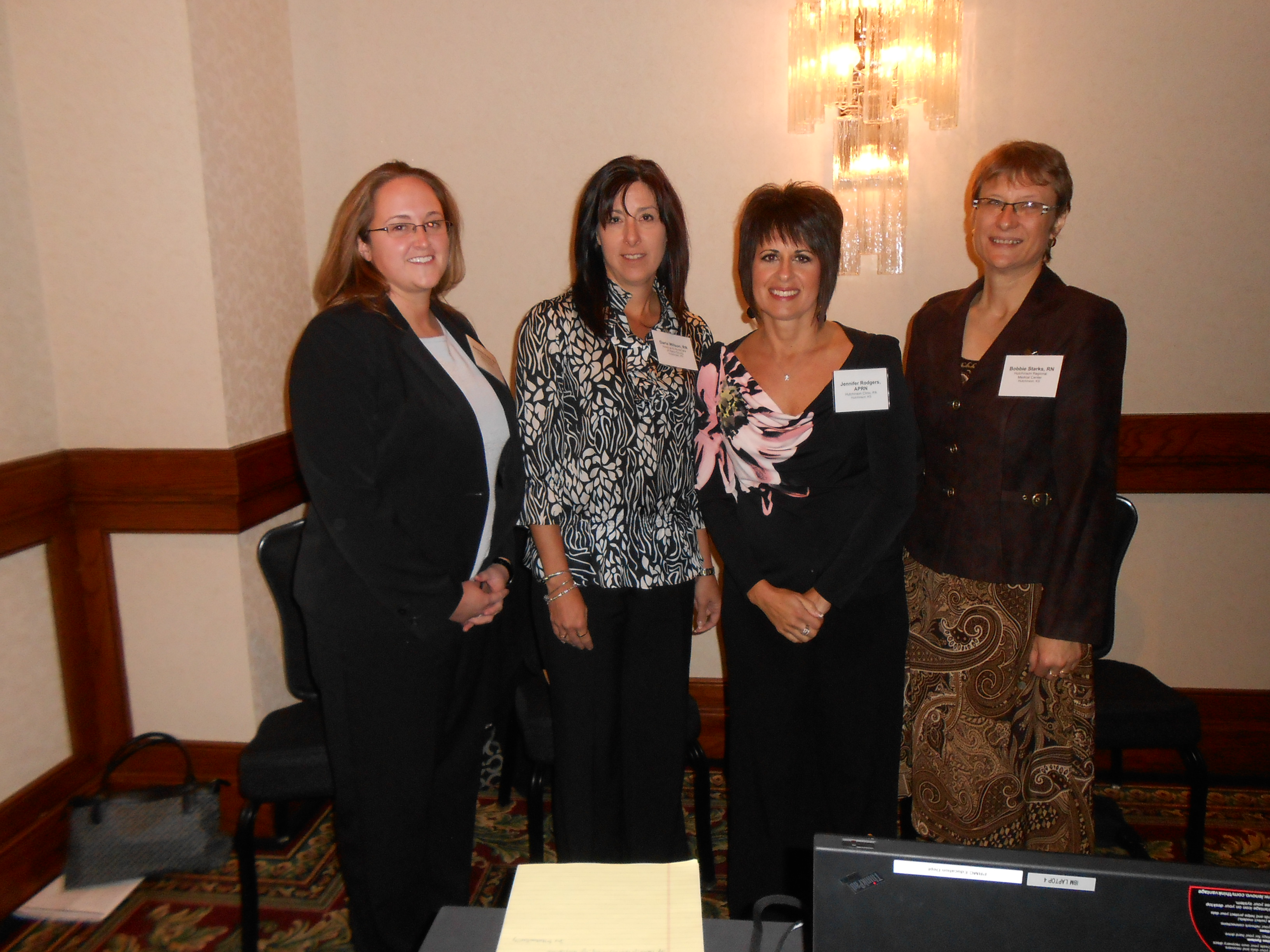
In 2006, the pilot pulmonary improvement initiative focused on a singular nursing unit and ICU patients dealing with chronic pulmonary diseases. Eight weeks in, the team had established intermediate goals, and were taking significant steps toward improving the care of patients who required mechanical ventilation. Over time, the team developed a new service line, a dedicated pulmonary care unit, and evidence-based treatment protocols.
In addition to Rodgers, the "team" includes: Robyn Chadwick, vice president of quality at Hutchinson Regional Medical Center (HRMC); Bobbie Starks, critical care educator for the HRMC; Amanda Hullet, a nurse care manager for the HRMC pulmonary unit; Darla Wilson, director of Hospice and Home Care of Reno County, a member of the Hutchinson Regional Healthcare System; and Diane Ingram, case manager, also with Home Care.
When the project began in 2006, chronic obstructive pulmonary disease (COPD) was the 4th leading cause of death. Today, it's stepped up to the 3rd leading cause of death. In 2010, the cost to treat this illness was estimated at $49 billion. (Source: NIH Morbidity and Mortality: 2010 Chart Book on Cardiovascular, Lung and Blood Diseases.)
In September 2007, the team performed a pre/post analysis of the community-based pulmonary care management program, comparing number of hospital admissions, the average length of stay (LOS), and the number of emergency room and ambulance calls. Right away, "we found we were doing better at admitting these patients at the right time to the right place," said Wilson. The patients had 137 admissions 'pre' and 21 admissions 'post'; the average LOS dropped from 8.82 days to 6.05 days; and the number of emergency room visits declined from 14 to 4 and the number of ambulance calls went from 51 to 8.
In 2011 (most recent data for the project) admissions decreased an additional 30 percent, length of stay declined to 4.55 days, and a reduction in cost per pulmonary patient was estimated at $29,000-40,000.
"Our hope was if problems were recognized early and treated appropriately, the patient's quality of life would improve, and the number of readmissions for exacerbations would decrease," said Rodgers.
Two events occurred that contributed to the project's success. The hospital opened a 23-bed pulmonary unit, and the pulmonary nurse care manager Diane Ingram transferred from a hospital position to a position with the home care company. Overnight, the reasonable progression of patients was in place. Ingram is described as the soul of the program, and recognized as such by the patients as well.
Ingram said, "the program is about the patient and their families, it's listening to their needs, their wants and dreams, and evaluating what it will take to make it happen within their disease limits."
The community care piece was identified as an integral part of the program. The team saw that "there needed to be an impact in the patient's home setting in order to make a real difference in their lives and clinical outcomes," said Wilson. To boost the outcomes, "we needed much more involvement and commitment by the nurses, HHHAs,and therapy staff, so all were trained more specifically in dealing with pulmonary patients, equipment, and teaching protocols," she added.
"Continuity with pulmonary patients is very important. This initiative allows the team to get to know the patients and their needs. Many of the patients want to manage at home; we are able to work with them throughout the stages of their disease and life. Patients and family are able to form a relationship with care management. They know who to call if the patient's status changes," said Wilson.
Patients benefit
More than 300 patients of all ages in multiple counties have been treated through the program and by the team. Once patients are in the program and involved in the follow-up, they become healthier, visits become less frequent and even phone calls become the norm for follow-up, said Rodgers.
In 2012, the team revived an outpatient pulmonary rehabilitation program. Patients enroll in a nine-week class that meets twice a week. The class builds cardiovascular endurance and increases overall muscle strength. Added value for the participants is the social network and informal group support.
Auxiliary benefits from the program include an increase in patient compliance with their treatment plan, a decrease in patient phone calls to the physicians' offices, decrease in unscheduled office visits, and a decrease in crisis calls and emergency room visits.
Terri Reed, the mother of patient Blake Reed, said, "Dr. Sourk and his pulmonary team were such an important part of our care for our son, Blake! They kept us and Blake informed and educated us to assist in making the best medical decisions possible. The pulmonary program cared about Blake as a patient and about us as a family."
Patient Lewis Dewitt, of Great Bend, said, "the program saved my life and it makes me feel secure. Multiple times over the past five years, without the pulmonary program, I would not have made it."
Providers benefit
Provider satisfaction is an outcome of the program as well. S. Ronsick, MD, reported, "the program slows down the revolving door by keeping patients out of the hospital. This program is a great interface between providers and patient."
"It's a team effort about patients with support from physicians and hospital administrators" Rodgers added.
Hullet, the nurse care manager for the pulmonary unit said, "it's exciting to be a part of a program that's innovative and ahead of its time. It's a problem you can't fix, but you can bring quality of life to the patients and keep them out of the hospital."
Pictured above (l to r) Amanda Hullet, RN, Darla Wilson, BSN, CHPN, Jennifer Rodgers, MSN, APRN, and Bobbie Starks, MSN, CCRN, of the Hutchinson Regional Medical Center, presented the results of the Community Pulmonary Program during the 2012 Summit on Quality in Wichita.